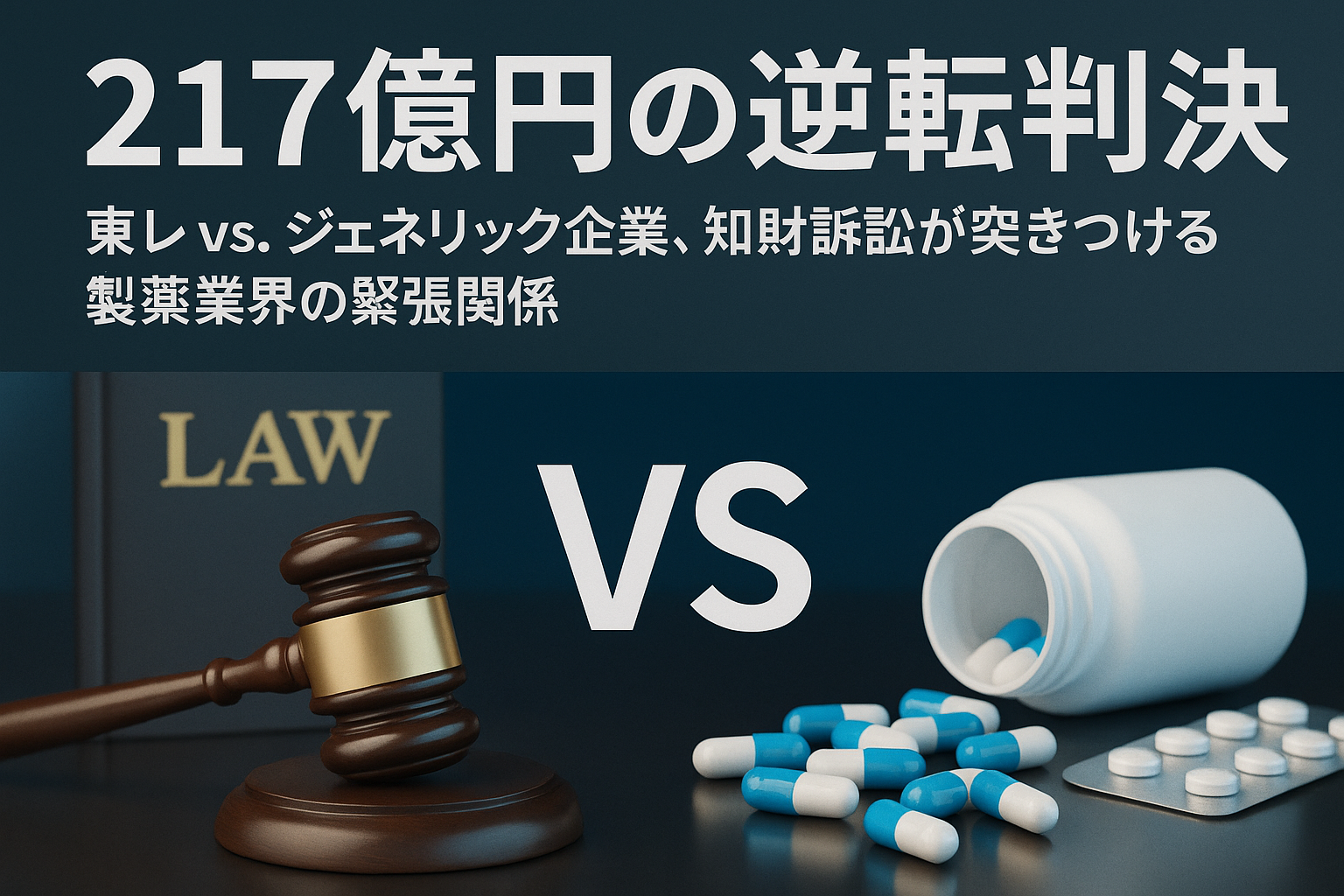On May 27, the Intellectual Property High Court of Japan handed down a reversal ruling in a lawsuit over a patent for an anti-itch medication, ordering Sawai Pharmaceutical and Fuso Pharmaceutical Industries to pay Toray Industries a total of approximately 21.7 billion yen. As the lower court had initially dismissed Toray’s claim, this ruling has sent shockwaves through the industry. This article explores the background and implications of the case.
Background: The Tug-of-War Between Patents and Generic Drugs
Developing pharmaceutical drugs requires massive investment and many years of research. Originator companies protect their investments through patents and aim to recoup costs via a period of exclusive sales. Conversely, generic drugs, which enter the market after patents expire, play a crucial social role by reducing medical costs through lower pricing.
However, conflicts like this are not uncommon, where originator companies claim that their patents are still valid, while generic drug makers argue that the patents are either invalid or not infringed.
Toray’s Reversal Victory: What Was Recognized?
Although Toray’s claim was initially dismissed by the district court, the IP High Court ultimately ruled in Toray’s favor. According to reports, the court determined that the products of Sawai Pharmaceutical and Fuso Pharmaceutical infringed upon Toray’s patent.
Such findings of infringement heavily depend on how the technical scope of a patent is interpreted. In the case of pharmaceuticals, formulation patents and use patents often involve abstract language and subtle differences in composition, making the judgments particularly complex.
The Significance of the 21.7 Billion Yen Damages
The damages amount—approximately 14.3 billion yen for Sawai and 7.5 billion yen for Fuso—is extremely large, comparable to the revenue from drug sales. For the generic industry, such massive compensation presents a serious financial risk.
This ruling underscores the importance of thorough prior patent risk assessments and serves as a reminder that even if a company proceeds with production and sales believing it will win in court, the outcome can still be overturned later.
What’s Next: Appeal and Ripple Effects Across the Industry
Both companies have indicated their intention to appeal, and the final decision will likely rest with the Supreme Court. However, even at this stage, the ruling has already heightened the pressure on generic companies to re-evaluate their patent infringement risks.
Furthermore, this decision could influence other lawsuits. If originator companies begin aggressively asserting their intellectual property rights, it could raise the barriers to market entry for generics and contribute to persistently high drug prices.
Balancing Intellectual Property and Public Interest
In the pharmaceutical industry, respecting patent rights and ensuring access to healthcare are often seen as conflicting priorities. While Toray’s victory reinforces the authority of the patent system, it also brings renewed attention to the delicate balance between “public benefit” and “corporate rights.” This case provides an opportunity to reconsider how that balance should be struck.

